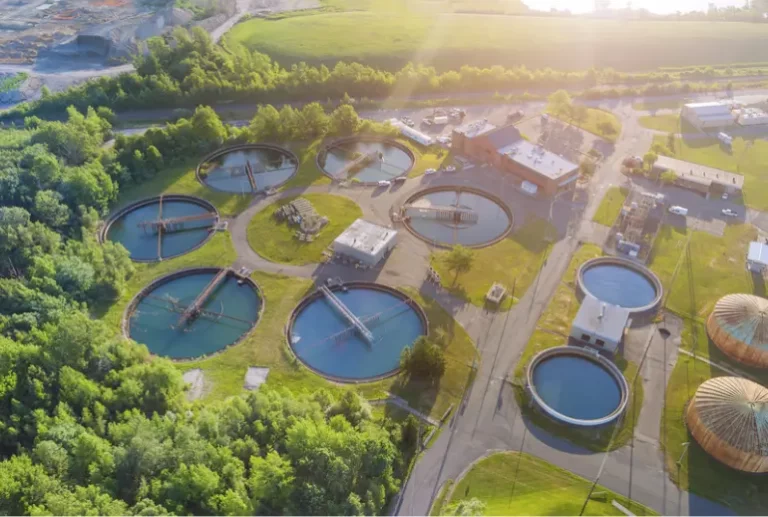“Water is the driving force of all nature.”
Leonardo da Vinci
Water treatment facilities play a critical role in ensuring public health and environmental safety by providing clean and safe water. However, these facilities face challenges such as aging infrastructure, equipment failure, and regulatory compliance issues. Predictive maintenance AI is emerging as a vital tool in these settings, enhancing the reliability and efficiency of water treatment operations. This article explores the application of predictive maintenance AI in water treatment facilities, underscored by industry data and detailed examples.
Significance of Predictive Maintenance in Water Treatment Facilities
Ensuring the uninterrupted operation of water treatment facilities is essential not only for public health but also for environmental protection. Equipment failures can lead to serious consequences, including service interruptions, water contamination, and non-compliance with environmental regulations.

Industry Insights:
- A report by the American Water Works Association (AWWA) indicates that the U.S. water sector needs to invest $1 trillion over the next 25 years to repair and replace aging water systems to ensure service reliability.
- According to Global Water Intelligence, predictive maintenance can reduce the costs of operations in water treatment facilities by up to 30%, emphasizing its potential impact on cost efficiency and resource management.
Real-World Application:
- A prominent example includes the City of Chicago’s water management department, which has implemented AI-driven predictive maintenance to monitor and maintain its extensive network of pumps and filtration equipment. The AI system predicts failures and optimizes maintenance schedules, thereby avoiding costly and disruptive equipment breakdowns.
How Predictive Maintenance AI Enhances Operations at Water Treatment Facilities

Early Detection of Equipment Failures: Predictive maintenance AI employs advanced sensors and data analytics to monitor the condition of equipment continuously. This technology can detect early signs of wear and tear or malfunctions, allowing for timely repairs before significant breakdowns occur.
Optimization of Maintenance Schedules: AI-driven systems analyze historical data to forecast when maintenance should be performed, moving beyond routine or calendar-based maintenance schedules. This optimization helps reduce unnecessary maintenance activities, saving time and resources.
Enhanced Compliance with Environmental Regulations: Maintaining equipment in optimal condition is crucial for complying with stringent environmental regulations. Predictive maintenance ensures that all machinery is operating efficiently, reducing the risk of incidents that could lead to regulatory violations.
Challenges and Solutions in Implementing Predictive Maintenance AI in Water Treatment
Integration with Existing Infrastructure: Many water treatment plants operate with outdated systems that are not readily compatible with modern AI technologies. Integrating AI requires both technical upgrades and strategic planning to ensure compatibility and continuity of operations.
Data Management and Analysis: Effectively implementing predictive maintenance AI depends on the quality and integration of data collected from various points within the water treatment process. Establishing robust data management practices is essential for accurate predictive analytics.
Training and Change Management: Adopting new technologies such as AI in traditional sectors like water treatment requires significant change management efforts. Training staff to understand and effectively use predictive maintenance AI is critical for its successful adoption.
PeakMet’s Contribution to Water Treatment Facilities
Tailored Predictive Maintenance Solutions: PeakMet provides predictive maintenance solutions that are specifically designed for the unique needs of water treatment facilities. These solutions ensure seamless integration with existing systems and offer real-time monitoring and predictive analytics.

Advanced Data Analytics Capabilities: PeakMet’s platforms are equipped with sophisticated data analytics tools that analyze operational data to predict maintenance needs and optimize resource use, ensuring facilities operate efficiently and within compliance standards.
Continuous Support and Compliance Expertise: Understanding the regulatory landscape of the water treatment industry, PeakMet offers ongoing support and expertise to help facilities maintain compliance with environmental standards while maximizing the benefits of predictive maintenance AI.
In conclusion, predictive maintenance AI is transforming the management and operation of water treatment facilities by improving equipment reliability, optimizing maintenance tasks, and ensuring regulatory compliance. With the support of advanced solutions like those from PeakMet, water treatment facilities can enhance their operational efficiency, reduce costs, and continue to provide essential services to the community effectively.


